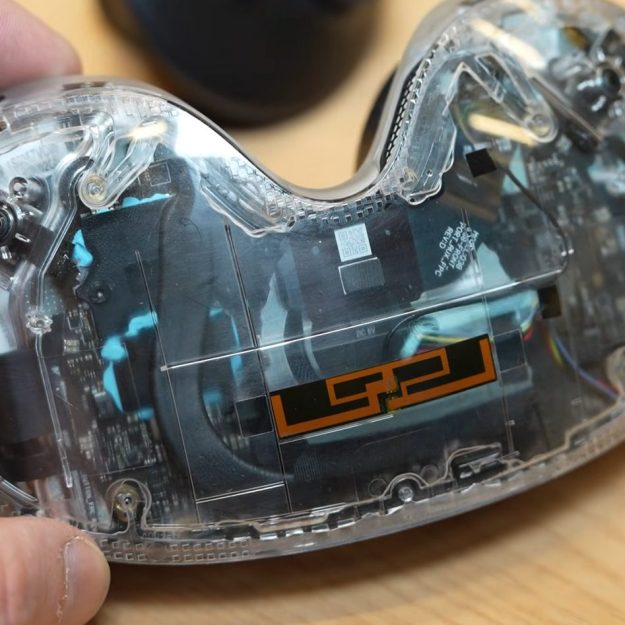
Valve’s new Steam Frame is what all the well-connected YouTubers are talking about, but most of them are talking about what it’s like to game on it. That’s great content if you’re into it, but not exactly fodder for Hackaday — with one exception. [Gamers Nexus] gives us a half hour of relatively-unedited footage of them just chatting with the engineers behind the hardware.
It’s great stuff right from the get-go: they start with how thermal management drove the PCB design, and put the SoC on the “back” of the chip, sandwiched betwixt heat pipes. We don’t usually think of taking heat through the PCB when building a board, so it’s a neat detail to learn about before these things get into the hands of the usual suspects who will doubtless give us teardown videos in a few months.
From there wanders to power delivery — getting the voltage regulators packaged properly was a challenge, since impedance requirements meant a very tight layout. Anyone who has worked on this kind of SBC might be familiar with that issue, but for those looking in from the outside, it’s a fascinating glimpse at electrical sausage being made. That’s just the first half.
The heat-regulation conversation is partially repeated the next conversation (which seems to have happened first) where they get into the cooling requirements of the LCD screens. This requires less than you might think, as they like to run warm for fast refresh. It’s really more about keeping your face cool. They also they discuss acoustic vibration — you don’t want your integrated audio shaking your IMUs apart — and why the prototype was being blasted with freakin’ laser beams to monitor it.
If you haven’t seen or read any other coverage on the Steam Frame, you’re going to miss some context here, but if you’ve not hid under a rock for that announcement, this is amazing detail to have. We’re hugely impressed that Valve let their engineers out of their cubicle-cave to talk to media.
Sure, it’s not an open-source VR headset, but compared to the deafening silence coming from the likes of Meta, this level of information is still awesome to have.
From Blog – Hackaday via this RSS feed
VR has always been a dead end. I think it is kinda sad to see them put so many resources behind this. It is an elites only kind of thing. Software and hardware are not portable. The hardware is nonstandardized and the development too proprietary/costly.
I saw this same business trend in cycling where corpo fuckbrains lack a fundamental understanding of customer demographics. They chase the top end at the expense of a focused entry market value. When cycling neglected the sub $2k competitive road bike and focused on ultra elite $4k-$10k bikes, the entire entry level racer market crashed out in Southern California, which is the largest cycling market in the Americas.
The only way VR ever becomes a real thing, is when it is no different than any other type of display and computer. It must be just as universally portable as picking a monitor and computer hardware. Proprietary platform lock is toxic nonsense. The thing is, these systems always use chips and sensors that are constantly getting discontinued by the silicon manufacturers. Shortly after the production run is mass manufactured, chips will be discontinued. Then all the development and engineering for the device is a dead end. The next device is the only solution, but it will be another proprietary island. The ultra elite and tiny VR market will be saturated with the last generation of devices, so the only way to recuperate the development cost and justify the risk is to deprecate the old devices. It is irresistible for the corpo fuckbrain to steal hardware like this because they hold the keys and own the proprietary garbage you paid ownership money for but effectively only rent. This cycle is inevitable. Going down this path clearly shows mass enshitification is inevitable because of dory the quarterly corpo fuckbrain is showing their cards.
I enjoy my Index and think VR is wonderful, still enjoying it since I got it in 2019, and it’s great exercise too. You are free to dislike it, maybe it’s not for you, which is fine. But don’t generalize.
Still bummed about Virtualboy I guess.
“Software and hardware are not portable”
My man. This headset runs linux. FEX is open source. Waydroid is open source. Most software uses the OpenXR API. This hardware might be proprietary but open source headsets do exist. VR doing better than ever.



